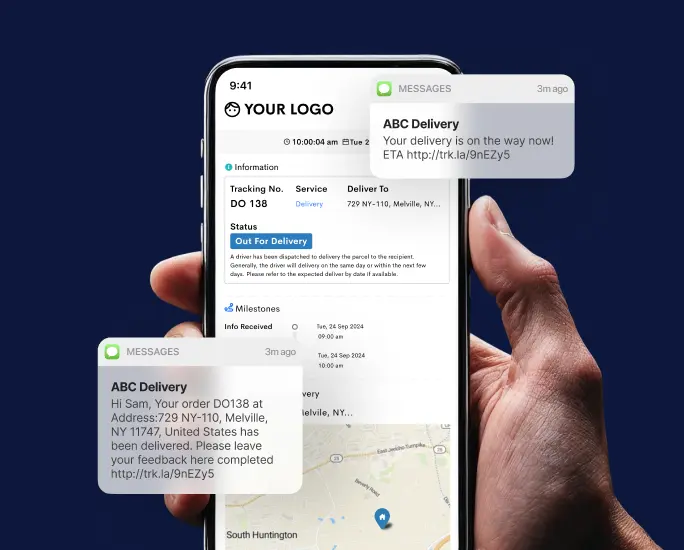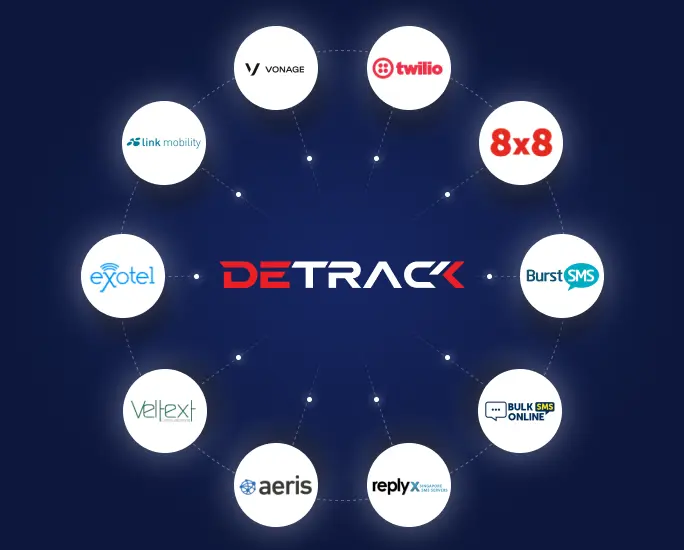An effective logistics strategy is essential for organizations seeking a competitive edge. A well-crafted logistics plan ensures the smooth flow of goods and resources and is pivotal in achieving broader business objectives.
From optimizing transportation and warehousing to enhancing customer satisfaction and sustainability, every aspect of logistics requires careful planning and execution.
Let’s delve into the strategies and best practices that can help businesses navigate challenges, seize opportunities, and achieve logistics excellence.
| Delivery Delays Are Sinking Your Customer Satisfaction Ratings Get real-time updates, optimize routes, and improve operational efficiency with Detrack Sign Up to Detrack |
Why Do You Need a Logistics Strategy?
A logistics strategy is essential for any organization, serving as the blueprint for efficiently managing the flow of goods and services from the point of origin to consumption.
Firstly, it enhances a company’s performance. According to a study published in the Journal of Sustainable Development of Transport and Logistics, this enhanced performance improves customer satisfaction through timely deliveries and boosts competitiveness by reducing overhead expenses.
Secondly, a logistics strategy ensures resilience and adaptability in natural disasters, supplier issues, or geopolitical events. By having contingency plans and alternative supply chain routes in place, companies can mitigate risks and maintain continuity in their operations, safeguarding against potential losses.
Moreover, a well-defined logistics strategy fosters collaboration and alignment across various organizational departments and stakeholders.

Components of a Logistics Strategy
- Supply Chain Management: This involves overseeing the entire process of sourcing raw materials, manufacturing products, and delivering them to customers. It includes supplier relationship management, procurement, and optimizing the flow of goods.
- Transportation and Fleet Management: This focuses on efficiently moving goods from one point to another, whether by road, rail, air, or sea. It involves managing fleets, optimizing routes, and ensuring timely delivery while minimizing costs.
- Warehouse and Inventory Management: This entails managing inventory levels, organizing storage spaces, and ensuring the efficient movement of goods within warehouses. It also involves inventory tracking, stock rotation, and order fulfillment.
- Demand Forecasting and Planning: This involves predicting customer demand for products or services and planning production and inventory levels accordingly. It helps in avoiding stockouts or overstock situations.
- Cost Management and Budgeting: This involves controlling costs associated with logistics operations, including transportation, warehousing, inventory, and labor. It also involves budgeting for these expenses and finding ways to optimize spending.
- Technology Integration and Automation: This involves leveraging inventory management software, transportation management systems, and automation tools to streamline logistics processes, improve efficiency, and reduce manual errors.
- Risk Management and Contingency Planning: This involves identifying potential risks to the supply chain, such as natural disasters, geopolitical events, or disruptions in the transportation network, and developing strategies to mitigate these risks.
- Compliance and Regulatory Adherence: Ensuring logistics operations comply with relevant laws, regulations, and industry standards. This includes customs regulations, transportation safety regulations, environmental regulations, and labor laws.
8 Steps to Developing a Logistics Strategy
Developing a logistics strategy involves a series of steps to ensure efficiency and effectiveness in managing the flow of goods and services. Here are eight key steps to guide you through the process:
- Assess Current Operations: Begin by evaluating your existing logistics operations. Identify strengths, weaknesses, opportunities, and threats (SWOT analysis) to understand where improvements can be made.
- Define Objectives: Clearly outline the goals and objectives of your logistics strategy. These may include reducing costs, improving delivery times, enhancing customer service, or expanding into new markets.
- Understand Customer Needs: Gain a deep understanding of your customer’s requirements and expectations regarding logistics. This insight will help tailor your strategy to meet their needs effectively.
- Evaluate Supply Chain: Assess your supply chain from end to end, including sourcing, production, warehousing, transportation, and distribution. Identify any bottlenecks or inefficiencies that need to be addressed.
- Technology Assessment: Evaluate the technology solutions for optimizing logistics processes. This may include transportation management systems (TMS), warehouse management systems (WMS), route optimization software, and inventory management tools.
- Risk Management: Identify potential risks and disruptions to your logistics operations, such as natural disasters, geopolitical events, or supplier issues. Develop contingency plans to mitigate these risks and ensure business continuity.
- Collaboration and Partnerships: Build relationships with key stakeholders, including suppliers, carriers, distributors, and technology providers. Collaboration can streamline processes, reduce costs, and improve overall efficiency.
- Continuous Improvement: Implement a culture of continuous improvement within your logistics operations. Regularly review performance metrics, gather stakeholder feedback, and adapt your strategy to address changing market conditions and customer needs.

Things to Consider When Developing Your Logistics Strategy
Market Trends and Customer Expectations
Understanding market trends helps align your logistics strategy with current demands. Likewise, knowing what customers expect regarding delivery speed, flexibility, and transparency can guide decisions regarding distribution channels and service levels.
Environmental and Sustainability Factors
With increasing concerns about environmental impact, integrating sustainability into logistics strategies is essential. This includes optimizing transportation routes to reduce emissions, using eco-friendly packaging materials, and implementing green warehousing practices.
Technological Advancements and Innovations
Embracing advancements such as AI, IoT, and blockchain can enhance efficiency and visibility within the supply chain. Investing in automation and predictive analytics tools can improve forecasting accuracy and streamline operations.
Cost-Benefit Analysis of Different Logistics Models
Conducting a thorough cost-benefit analysis helps evaluate the financial implications of various logistics models. This involves comparing transportation costs, inventory management, and warehousing costs against the benefits of improved service levels and customer satisfaction.
Long-term Business Goals and Objectives
Aligning logistics strategies with long-term business goals ensures that they contribute to the organization’s overall success. Whether focusing on expanding into new markets, reducing operational costs, or enhancing customer experience, the logistics strategy should support these objectives.
Create the Right Logistics Strategy for your Business
In conclusion, crafting the right logistics strategy is pivotal for the success of any business operating in today’s fast-paced environment. By aligning supply chain operations with overarching business objectives, companies can optimize efficiency, reduce costs, and enhance customer satisfaction.
However, executing an effective logistics strategy requires the right tools and technologies. One such solution is Detrack, a comprehensive logistics management platform designed to streamline operations, improve visibility, and ensure timely delivery of goods.
Detrack offers a range of features, including real-time tracking, route optimization, electronic proof of delivery (ePOD), and customizable reporting capabilities. By leveraging Detrack, businesses can gain better control over their supply chain processes, identify areas for improvement, and ultimately drive greater value for both their organization and customers.
| Delivery Delays Are Sinking Your Customer Satisfaction Ratings Get real-time updates, optimize routes, and improve operational efficiency with Detrack Sign Up to Detrack |










